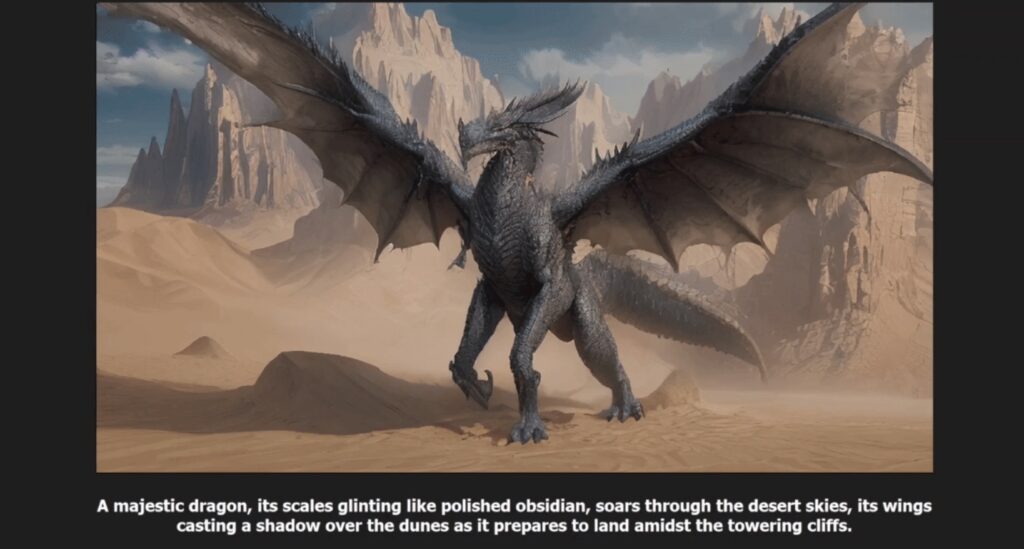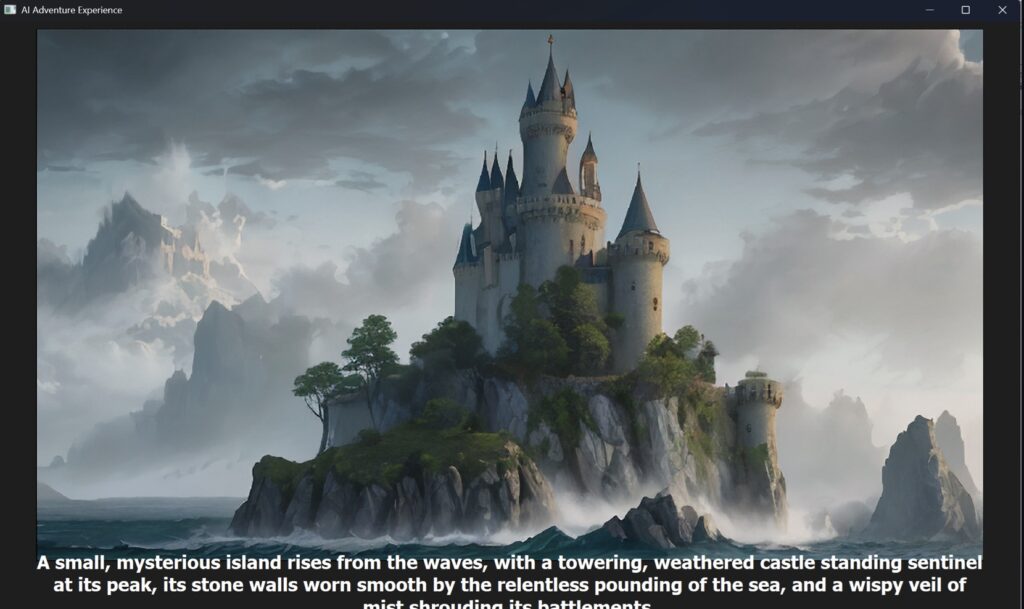Storytelling with Voice-Controlled Image Generation
- Intel’s new AI Adventure Game Assistant, recently unveiled on GitHub, allows users to create AI-generated images for adventure games simply by describing scenes with their voice.
- Combining speech recognition, large language models, and AI art APIs, this tool offers a seamless creative experience for storytellers and gamers, like those playing Dungeons & Dragons.
- Amidst the buzz around AI image and video generation, Intel continues to push boundaries in gaming with innovations like the AI Gaming Coach, blending AI with interactive entertainment.

Imagine crafting a vivid fantasy world for your next Dungeons & Dragons campaign or sketching out concept art for a game, all without lifting a pencil—just by speaking. Intel has turned this dream into reality with their latest project, the AI Adventure Game Assistant, a tool that’s quietly popped up on their GitHub page. This innovative assistant integrates voice detection, generative AI, and image creation to transform spoken descriptions into stunning visuals. It’s a game-changer for storytellers, gamers, and creators who want to bring their ideas to life effortlessly. But this isn’t just a one-off experiment; it’s part of Intel’s broader push into AI-driven gaming solutions, riding the wave of excitement around AI image and video generation.
At its core, the AI Adventure Game Assistant is about accessibility and creativity. You start by setting a theme for your story, hit the start button, and describe a scene—whether it’s a shadowy forest haunted by goblins or a towering castle under siege. The AI, powered by technologies like Whisper for speech recognition and Llama3-8b-instruct for language processing, listens and generates an illustration based on your words. What’s particularly clever is its ability to filter out irrelevant chatter. If you’re playing D&D and get sidetracked with a joke or unrelated comment, the AI recognizes it as off-topic and stays focused on your story. Getting started is straightforward, though it does require Python 3.10 or higher and a few libraries, as outlined in Intel’s setup guide on GitHub. It’s a small technical hurdle for a tool that could redefine how we visualize narratives.
This project arrives at a time when AI image and video generation are dominating tech conversations. Tools like Google’s Veo 3 have sparked both awe and concern, with their ability to create hyper-realistic videos that could blur the line between fiction and reality. Google has already implemented safeguards to prevent misuse, but the ethical debates rage on. Intel’s focus, however, seems more niche and user-friendly, targeting creators who need quick, imaginative outputs without the risk of deepfake controversies. The AI Adventure Game Assistant isn’t just a gimmick; it’s a practical solution for anyone who’s ever struggled to translate their mental images into art, whether for tabletop RPGs or early game design concepts.

Intel’s foray into AI for gaming doesn’t stop here. They’ve been weaving artificial intelligence into entertainment for a while, from their XeSS upscaling and frame generation technologies to more interactive tools. Take their AI Gaming Coach, showcased at Computex 2025, which offers real-time guidance to players. During a demo with Black Myth: Wukong, the coach provided live tips, pulled up video tutorials before boss fights, and even supported a chatbot window for in-game questions—no need to Alt-Tab or scour the web for walkthroughs. This mirrors similar efforts by Microsoft with their Copilot AI gaming coach earlier this year. While these tools have sparked mixed reactions (some gamers love the help, others feel it detracts from the challenge), their optional nature means you can play your way, with or without a digital sidekick.
What ties these innovations together is Intel’s vision of a future where AI doesn’t just enhance graphics or performance but transforms how we interact with games and stories. The AI Adventure Game Assistant is a perfect example: it democratizes art creation, making it accessible to those who might not have the skills or tools to draw. A dungeon master describing a scene to their players can now show them the eerie cavern they’re exploring, conjured up in seconds. A game developer brainstorming environments can iterate visually without waiting for an artist. It’s a small but powerful step toward a world where technology amplifies imagination rather than replaces it.
Of course, as with any AI tool, there are questions about originality and over-reliance. Will creators lean too heavily on generated art instead of honing their own skills? Could the technology misinterpret nuanced descriptions, leading to frustrating results? These are valid concerns, but Intel’s project feels like an early experiment—one that invites feedback and iteration. For now, it’s a delightful proof of concept, especially for niche communities like tabletop gamers who thrive on shared storytelling.
As AI continues to reshape content creation, from Intel’s voice-driven illustrations to Google’s video generation marvels, we’re witnessing the dawn of a new creative era. Intel’s AI Adventure Game Assistant might not make headlines like some flashier tools, but its potential to empower storytellers is undeniable. Whether you’re a gamer, a writer, or just someone with a wild imagination, this tool offers a glimpse into a future where your voice is your paintbrush.
